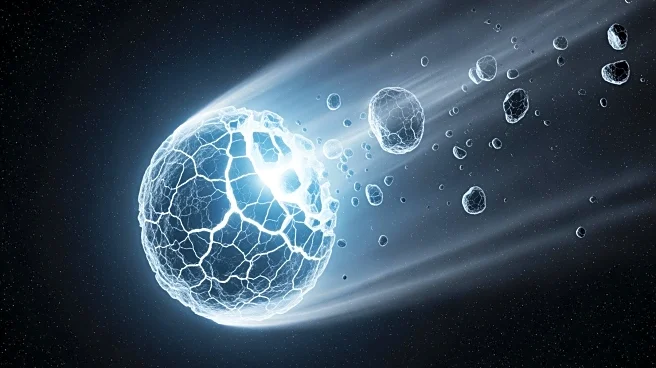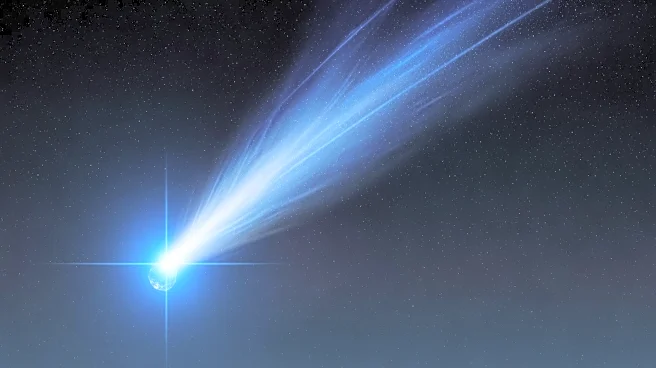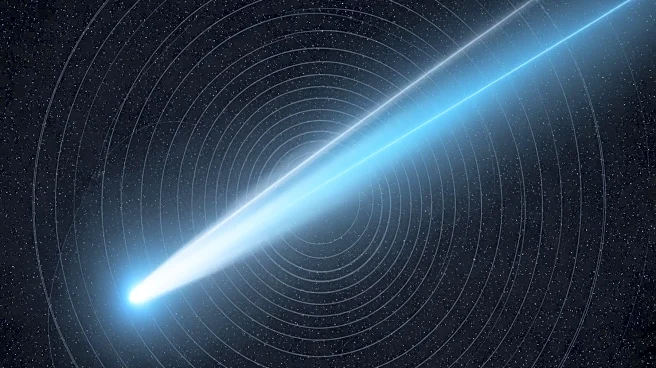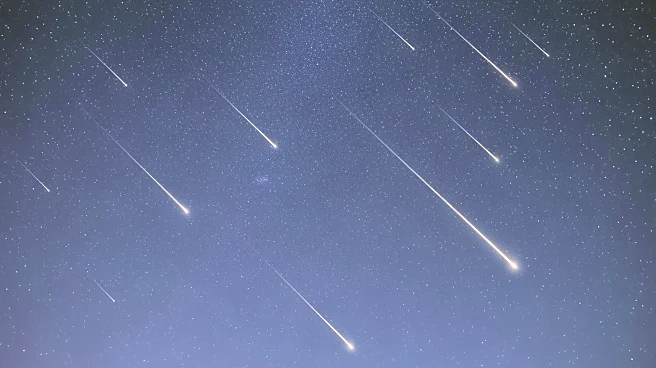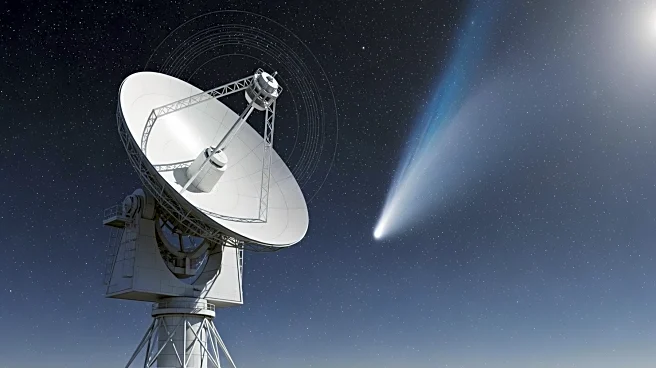What's Happening?
Comet C/2025 K1 ATLAS, an Oort-cloud comet, is undergoing significant fragmentation, as revealed by recent images and animations from the Virtual Telescope Project. The comet's inner coma shows several
pieces and clouds of debris following a recent outburst. The images, captured using a robotic telescope in Italy, highlight the dramatic changes in the comet's structure over a short period. The fragmentation is a natural process for comets as they approach the Sun and experience increased solar radiation.
Why It's Important?
The fragmentation of C/2025 K1 ATLAS provides a unique opportunity for astronomers to study the physical processes that govern cometary behavior. Understanding how comets break apart can offer insights into their composition and the forces acting upon them as they travel through the solar system. This knowledge is crucial for predicting the behavior of other comets and assessing potential risks they may pose to Earth. The study of cometary fragmentation also contributes to the broader understanding of solar system dynamics and the evolution of celestial bodies.
What's Next?
Astronomers will continue to monitor C/2025 K1 ATLAS to observe the progression of its fragmentation. The Virtual Telescope Project plans to capture more images and animations to document the changes in the comet's structure. These observations will help refine models of cometary fragmentation and improve predictions of future comet behavior. The data collected will be analyzed to understand the composition of the comet's debris and the impact of solar radiation on its structure.
Beyond the Headlines
The fragmentation of C/2025 K1 ATLAS also highlights the importance of technological advancements in astronomy. The ability to capture detailed images and animations of cometary events is made possible by sophisticated telescopes and imaging techniques. These tools enable astronomers to study celestial phenomena with greater precision and contribute to the advancement of scientific knowledge.
